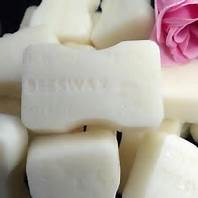Cosmetics Unmasked - Introduction



 v
v





Cosmetics Unmasked - Introduction
In the factory we make cosmetics. in the store we sell hope - Charles Revson
There are over 7,000 ingredients available to manufacturers for use in cosmetics and toiletries (including nearly 1,000 aromatic and perfume chemicals ), of which more than a thousand are known to have harmful effects, and many of these are subject to some level of legal restriction. Another 900 ingredients may have been manufactured in such a way to potentially contaminated with cancer-causing chemicals.
Recent tests carried out by the US Food and Drug Administration (FDA) have found that a large number of these contaminants have indeed found their way into finished products in substantial quantities. This means that more than one out of every four of the ingredients listed on the label of a bottle of shampoo, for instance, or a jar of face cream, is either on the restricted list, or may be harmful in some way. That does not mean that the product is harmful, but simply that there are potential dangers that the user should be aware of.
Name Standardization
In order to address this issue, the authorities responsible for the regulation of cosmetics and toiletries - The European Union (EU) Commission in Europe and the FDA in the USA - have introduced standards for the listing of ingredient names on product labels. Standardization has made it easier to import and export cosmetics and toiletries through the use of internationally agreed ingredient names.
The EU Commission and the FDA have clearly stated why ingredients should be listed, consumers who have an allergy or sensitivity to particular ingredients can easily identify , and so avoid, the cosmetics that contain them. To some extent, this is an acknowledgement by the regulating authorities that some cosmetic ingredients are irritants or have harmful effects.
Meaningless Labels
The standardization of ingredient names sounds all very helpful to those consumers with sensitive skin and allergies , until you actually pick up a bottle of shampoo or skin cream and try to read the label. The chemical names of many of these ingredients are completely meaningless to most people, including chemists. The formal name of a chemical can run into several lines and read like a sentence - with commas, hyphens, brackets, and numbers scattered between unpronounceable, long words. To a chemist, the name is a precise description of the ingredient's chemical structure and yields a great deal of information about a substance.
The problem is that cosmetic and toiletry manufacturers do not use formal chemical names. If they did, the list of ingredients would not fit on the label. Either shortened versions or trivial names are used, but they carry no useful information unless you are in the know, which most consumers are not.
If you become sensitized to a product, there is quite a problem of tracking down the offending chemical. Most cosmetics and toiletries contain at least a dozen ingredients. One brand of sunscreen on sale in the UK lists 46 chemicals and invites the customer to see the in-store list for further ingredients. How do you know which of these ingredients is either making you itch or your face fell as though it's been burnt?
Cosmetics Unmasked: Dr.Stephen & Gina Antczak
Articles-Latest
- Skin tags: Why they develop, and how to remove them
- So That’s Why Your Skin Gets Crepey As You Get Older
- Eye Infection from False Eyelashes
- Teeth stain removal and whitening solutions
- Benefits of collagen for skin
- Why vitamin E should be part of your skincare regime
- Can gray hair be reversed?
- Hair loss affects 1 in 10 women before the menopause – here’s how to treat it
- Conscious ageing and Black skin: What happens when Black does crack?
- Your skin color may affect how well a medication works for you — but the research is way behind
- The C word Cancer
- Astringents
- How does light therapy work? The science behind the popular skincare treatment
- The Most Offensive Fashion Police Criticisms of All Time
- Everything you need to know about lip filler migration, as told by the experts
- Pig semen and menstrual blood – how our ancestors perfected the art of seduction
- Everything you need to know about benzoyl peroxide
- We've bleached, relaxed, and damaged our hair to make ourselves look more white
- Will this be the year that facial filler is cancelled?
- Shock of the old: 10 painful and poisonous beauty treatments
Cosmetic ingredients
LOGIN
Who's On Line
We have 97 guests and no members online
Articles-Most Read
- Home
- White Bees Wax
- Leucidal
- Cosmetic Preservatives A-Z
- Caprylyl Glycol
- Cosmetics Unmasked - How Safe Are Colorants?
- Cosmetics Unmasked - Choosing Ingredients
- Cosmetics Unmasked - Colorants And Fragrances
- EcoSilk
- Toxic Beauty - Who's Looking At Cosmetics?
- Cosmetics Unmasked - Fragrances
- Microbes and Cosmetics
- Chemicals Lingering In The Environment
- Microbes and Safety Standards
- Yellow Bees Wax
- Potassium Sorbate
- Toxic Beauty - Hazardous To Your Health
- What's Happening in the USA - Cosmetic Regulations - Toxic Beauty
- Synthetics In Cosmetics - The Industry Fights Back
- Fresh Goat's Milk Soap
- Active Ingredients
- Cosmetics Unmasked - Listing Cosmetics
- Toxic Beauty - Cocktails and Low Doses
- Natural Waxes A-Z
- Natural Butters A-Z



